|
 Secure Site
Secure Site
|
 |
Archive for the 'Hot Springs' Category
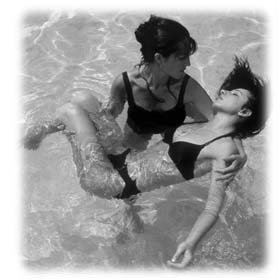 watsu
Watsu, a portmanteau of water and shiatsu, is a form of body massage performed while lying in warm water (around 35 °C or 95 °F). The receiver of Watsu treatment is continuously supported by the therapist while he or she rocks and gently stretches the body. Because it is performed in the water, the body is free to be manipulated and stretched in ways impossible while on the land. A normal session would a professional hour of 50 minutes. Many Watsu practitioners us the Zen Timer to end their sessions.
 Bamboo Digital Chime Clock, a Watsu Timer and Clock Watsu was created by therapist Harold Dull in the early 1980s, then director of the Harbin School of Shiatsu and Massage in northern California. The technique slowly evolved as he began to incorporate aspects of Zen Shiatsu into his therapy. Watsu pools have now been introduced as a therapeutic passive massage tool as in the 2008 Turkish hamams Lake Conroe resort project.
adapted from wikipedia.org
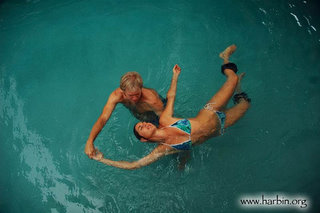 watsu Now & Zen
1638 Pearl Street
Boulder, CO 80302
(800) 779-6383
Posted in Bamboo Chime Clocks, Chime Alarm Clocks, Hot Springs, Japanese Inspired Zen Clocks, mindfulness practice, Well-being
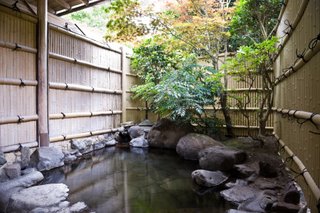 sacred soaking Water, a powerful and restorative element in exquisite rituals throughout the ages, finds itself front and center in most spiritual rites of passage. Many cultures consider water essential for both physical and spiritual cleansing, and millions continue to embark upon quests to holy rivers and healing springs, drawn to water equally for its soothing properties as well as its promise of purification.
Perhaps this draw to water feels so instinctual because our brains, blood, and even our muscles are composed mainly of water. When we submerge ourselves, we return, in essence, to a deep, primordial connection with the world around us. Through the simple act of bathing, we can celebrate this ancient relationship between water and life. With minimal effort, a daily bath becomes a meditative and mystical experience, helping us to connect with our own inner wisdom.
“Mankind has used water to restore the physical, mental, and emotional body since ancient times,” says Barbara Close, founder of Naturopathica Holistic Health and author of Pure Skin: Organic Beauty Basics (Chronicle Books, 2005). “From the beginning, the use of water as a conduit or healing agent has existed for both its physical and emotional healing properties.”
Long before holy wells began to draw pilgrims or the custom of “taking the waters” became popular at lavish bathing halls in Europe, ancient cultures in Asia, Indonesia, and Mesoamerica had their own elaborate bathing rituals, which often involved the use of steam and ceremonial sound. Both the Aztec Temazcal and Mayan Zumbul-che wove in musical elements to signify the start of the cleansing ritual. In parts of today’s world, including Indonesia, Southeast Asia, and island nations of the Pacific, cultures still associate wells, springs, and rivers with the Goddess, the feminine principle, and birth. Women add flower petals to ritual water as an extra flourish, imbuing their bath with the powerful spiritual energy associated with native plants. In the Javanese bath ritual that prepares brides for their wedding night, attendants first scrub and exfoliate the skin with turmeric and then rub it with yogurt to soften it. A luxurious bath with flowers and petals follows, and only then is the bride deemed purity incarnate.
 water “Each and every one of us, and every fragment of life on our planet, has an inner and outer relationship with water,” says Nadine Epstein, author (with Rosita Arvigo) of Spiritual Bathing: Healing Rituals and Traditions From Around the World (Celestial Arts, 2003). “The first living cells were formed in the salt bath of the sea, and I love imagining the blood that flows within us as a kind of internal sea. We are beings of water on a planet that is distinguished by its possession of water, the rushing waters that the early Jews called ‘living waters’ or mayyim hayyim.”
Ritual and renewal
You can connect with the healing energy of water by preparing your own spiritual bath at home. First order of business: Decide what you want to manifest in your life. The prospects run the gamut from the desire to release personal sadness or frustration to the hope of reducing global suffering. Next, establish the mood. The usual suspects, candles and incense, have traditionally been part of many prayer settings, but let your imagination run wild. Create an even richer ambiance by including specific music, scents, symbols, and images that resonate with your concept of the divine.
“Personally, I love singing and chanting on the surface of the water, watching the ripples of my breath, and soaking up the sounds in the air,” says Epstein. “I’ve always been fascinated by sound waves and how they travel through solids, gases, and liquids. As a little girl, I remember my father, a physicist, mapping the trajectory of sound waves through crystals. The symmetries of these waves were and are a beautiful thing to behold. It all boils down to connecting with what the Maya call ch’ulel, the Chinese call chi, the Hindus call prana. Nearly every culture has a name for the subtle energies or vibrations that exist within us and beyond.”
Ultimately, only the reverence with which we enter the water matters. If we are receptive enough, our immersions can gradually wring a sea change upon our spirit, teaching us that we can learn as much from floating as we can from standing on firm ground.
Although meditation can be done in almost any context, practitioners usually employ a quiet, tranquil space, a meditation cushion or bench, and some kind of timing device to time the meditation session. Ideally, the more these accoutrements can be integrated the better. Thus, it is conducive to a satisfying meditation practice to have a timer or clock that is tranquil and beautiful. Using a kitchen timer or beeper watch is less than ideal. And it was with these considerations in mind that we designed our digital Zen Alarm Clock and practice timer. This unique “Zen Clock” features a long-resonating acoustic chime that brings the meditation session to a gradual close, preserving the environment of stillness while also acting as an effective time signal.
 Portable Zen Timer with Chime by Now & Zen, Inc. adapted from Natural Solutions Magazine, March 2007 by Debra Bokur
 Natural Sound Alarm Clock with Chime Now & Zen’s Portable Meditation
Timer Store
1638 Pearl Street
Boulder, CO 80302
(800) 779-6383
Posted in Hot Springs, intention, Meditation Timers, Meditation Tools, mindfulness practice, Well-being
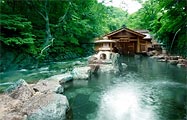 Takaragawa Onsen in Japan 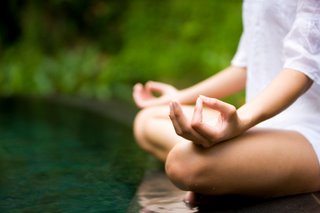 Practice Mindfulness at an Onsen An onsen is a term for hot springs in the Japanese language, though the term is often used to describe the bathing facilities and inns around the hot springs. As a volcanically active country, Japan has thousands of onsen scattered along its length and breadth.
Onsen come in many types and shapes, including outdoor and indoor baths. Baths may be either public run by a municipality or private often run as part of a hotel, ryokan or Bed and Breakfast.
 Ten Thousand Waves in Santa Fe, NM Onsen are a central feature of Japanese tourism often found out in the countryside but there are a number of popular establishments still found within major cities. They are a major tourist attraction drawing Japanese couples, families or company groups who want to get away from the hectic life of the city to relax. Japanese often talk of the virtues of “naked communion” for breaking down barriers and getting to know people in the relaxed homey atmosphere of a ryokan with an attached onsen.
The presence of an onsen is often indicated on signs and maps by a kanji, (yu, meaning “hot water”).
One of Now & Zen’s favorite Japanese onsen is called Ten Thousand Waves, located in the mountains of Santa Fe, New Mexico.
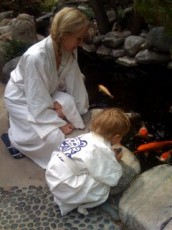 Taking time to view the Koi fish at Ten Thousand Waves Onsen In the larger scheme of things, our days on this planet are few and precious, so it seems fitting that we should begin each day with grace and beauty. Used as an alarm clock, your Zen Clock thus serves as a useful reminder that each day is a new and sacred opportunity to live life to its fullest. But in addition to its use as an alarm clock, your Zen Timepiece is also an aesthetically-sophisticated timer that enhances practice activities and social gatherings. It can also serve as a “mindfulness bell” that periodically calls you to stillness.
We often bring our Digital Zen Timer with us as a ‘Travel Alarm Clock’ when we go on a journey so that we can use it to meditate in a lovely hot spring like Ten Thousand Waves.
 Meditation Timer with Singing Bowl
However, our Zen Timepiece’s acoustic 6-inch brass bowl-gong clock is the world’s ultimate alarm clock, practice timer, and “mindfulness bell.”
Now & Zen’s Meditation Timer Store
1638 Pearl St.
Boulder, CO 80302
(800) 779-6383
 Timer in Bamboo by Now & Zen, Boulder, CO
Posted in Chime Alarm Clocks, Hot Springs, Japanese Inspired Zen Clocks, Meditation Timers, Meditation Tools, Now & Zen Alarm Clocks, Truth, Zen Timers
 Soaking Water, a powerful and restorative element in exquisite rituals throughout the ages, finds itself front and center in most spiritual rites of passage. Many cultures consider water essential for both physical and spiritual cleansing, and millions continue to embark upon quests to holy rivers and healing springs, drawn to water equally for its soothing properties as well as its promise of purification.
Perhaps this draw to water feels so instinctual because our brains, blood, and even our muscles are composed mainly of water. When we submerge ourselves, we return, in essence, to a deep, primordial connection with the world around us. Through the simple act of bathing, we can celebrate this ancient relationship between water and life. With minimal effort, a daily bath becomes a meditative and mystical experience, helping us to connect with our own inner wisdom.
“Mankind has used water to restore the physical, mental, and emotional body since ancient times,” says Barbara Close, founder of Naturopathica Holistic Health and author of Pure Skin: Organic Beauty Basics (Chronicle Books, 2005). “From the beginning, the use of water as a conduit or healing agent has existed for both its physical and emotional healing properties.”
Long before holy wells began to draw pilgrims or the custom of “taking the waters” became popular at lavish bathing halls in Europe, ancient cultures in Asia, Indonesia, and Mesoamerica had their own elaborate bathing rituals, which often involved the use of steam and ceremonial sound. Both the Aztec Temazcal and Mayan Zumbul-che wove in musical elements to signify the start of the cleansing ritual. In parts of today’s world, including Indonesia, Southeast Asia, and island nations of the Pacific, cultures still associate wells, springs, and rivers with the Goddess, the feminine principle, and birth. Women add flower petals to ritual water as an extra flourish, imbuing their bath with the powerful spiritual energy associated with native plants. In the Javanese bath ritual that prepares brides for their wedding night, attendants first scrub and exfoliate the skin with turmeric and then rub it with yogurt to soften it. A luxurious bath with flowers and petals follows, and only then is the bride deemed purity incarnate.
 soaking in sacred water “Each and every one of us, and every fragment of life on our planet, has an inner and outer relationship with water,” says Nadine Epstein, author (with Rosita Arvigo) of Spiritual Bathing: Healing Rituals and Traditions From Around the World (Celestial Arts, 2003). “The first living cells were formed in the salt bath of the sea, and I love imagining the blood that flows within us as a kind of internal sea. We are beings of water on a planet that is distinguished by its possession of water, the rushing waters that the early Jews called ‘living waters’ or mayyim hayyim.”
Ritual and renewal
You can connect with the healing energy of water by preparing your own spiritual bath at home. First order of business: Decide what you want to manifest in your life. The prospects run the gamut from the desire to release personal sadness or frustration to the hope of reducing global suffering. Next, establish the mood. The usual suspects, candles and incense, have traditionally been part of many prayer settings, but let your imagination run wild. Create an even richer ambiance by including specific music, scents, symbols, and images that resonate with your concept of the divine.
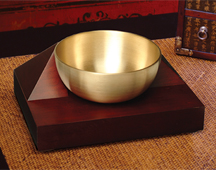 Set Your Singing Bowl Chime Timer for a Sacred Soak at Home “Personally, I love singing and chanting on the surface of the water, watching the ripples of my breath, and soaking up the sounds in the air,” says Epstein. “I’ve always been fascinated by sound waves and how they travel through solids, gases, and liquids. As a little girl, I remember my father, a physicist, mapping the trajectory of sound waves through crystals. The symmetries of these waves were and are a beautiful thing to behold. It all boils down to connecting with what the Maya call ch’ulel, the Chinese call chi, the Hindus call prana. Nearly every culture has a name for the subtle energies or vibrations that exist within us and beyond.”
Ultimately, only the reverence with which we enter the water matters. If we are receptive enough, our immersions can gradually wring a sea change upon our spirit, teaching us that we can learn as much from floating as we can from standing on firm ground.
Liquid Assets
By varying water temperature, length of soaking time, and what you add to the bath, you can create a variety of healing environments.
“Adding herbal extracts and essential oils can intensify the healing experience,” explains Barbara Close, herbalist, aromatherapist, and founder of Naturopathica. “Essential oils are lipophyllic—meaning that they repel water and are attracted to fat-based substances such as the adipose tissue that makes up human skin. Baths are one of the most effective ways to utilize the benefits of aromatherapy. In addition to cleansing, essential oils can be used for their decongestant, diuretic, and antiseptic properties, as well as the emotional benefits they offer in quieting or energizing the body.”
In her book, Pure Skin: Organic Beauty Basics, Close offers the following guidelines for optimal bathing.
To relax, relieve stress, and promote restful sleep: Water temperature should be warm, about 92 to 100 degrees. Add essential oil of rose, lavender, mandarin, or neroli to water, swirling to disperse, and soak for 20 to 30 minutes. Be sure to set your Zen Chime Clock to end your soaking practice.
To energize, renew, and revitalize: Water should be tepid to cool, with temperature ranging from 80 to 92 degrees. Add essential oil of rosemary, lavender, or grapefruit. Soak for 10 to 15 minutes.
For detoxification: Water temperature should be between 100 and 110 degrees. Add essential oil of juniper, lemon, cypress, or grapefruit to water. Submerge body for no more than five to eight minutes; then rest quietly and allow blood pressure to return to normal.
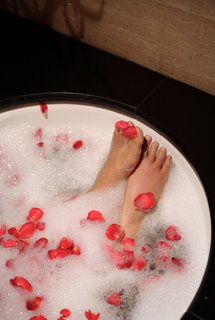 Flower Bath Flower Baths
Recognizing plants as living, sentient beings, many cultures have traditions that involve bathing with flowers, such as the bridal preparation baths of Indonesia and the petal baths favored by the Incas. While easy to replicate, remember to use only organic flowers and herbs, as the pesticides and chemicals in conventionally produced botanicals may leach into your bath water and be absorbed through your skin. Whenever possible, gather the herbs and flowers yourself, giving appropriate thanks to the living plant as you harvest.
•• For an Incan bath as described in her book Spiritual Bathing, Nadine Epstein suggests gathering plants (the equivalent of a handful) on a sun-filled day between the hours of 11 a.m. and 4 p.m. Good choices include burdock, plantain, St. John’s wort, roses, zinnias, and marigolds or the leaves and flowers from herbs such as sage, thyme, and rosemary.
•• Place the flowers in a basin of water or other vessel that will accommodate 3 to 5 gallons of water. While chanting, reciting prayers, or setting a specific intention, gently squeeze the flowers with your hands, releasing their essence into the water. Allow the mixture to remain in the sunlight for several hours; then pour the water over your body in the shower or tub. (Be sure to cover your drain so that the plants don’t cause clogging.)
•• Appreciate the visual and olfactory pleasure of the plants. As Epstein says, “There is something hypnotic about the strikingly lovely, swirling, ever-changing patterns created by hollyhock and rose petals as they traverse the surface of water.”
adapted from Natural Solutions, March 2007 by Debra Bokur
 Zen Chime Clock Headquarter Store 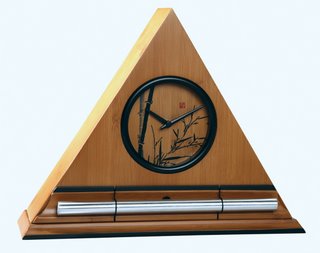 Bamboo Zen Alarm Clock with Chime Now & Zen’s Singing Bowl Alarm Clock Shop
1638 Pearl Street
Boulder, CO 80302
(800) 779-6383
Posted in Hot Springs, Now & Zen Alarm Clocks, Well-being
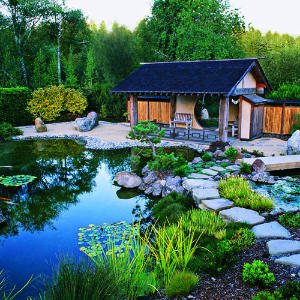 Flecked with water lilies and fringed with greenery, a heart-shaped pond exemplifies the spirit of the Osmosis Meditation Garden. A stone path leads visitors across a small bridge to the Moon Pavilion In the West, gardens are designed for outdoor living as much as for viewing. Japanese gardens, on the other hand, are more for viewing ― to communicate peace and tranquility. The new Meditation Garden at the Osmosis spa in Freestone blends the two approaches. “It’s a Japanese-style garden created for California,” says owner Michael Stusser. The design, by Robert Ketchell, founder of the British Japanese Garden Society, is Japanese, but the use of California native plants and the lovely coastal-hills setting tie it directly to the region.
What makes it so serene? A mirror-smooth pond reflects the day’s changing light and passing clouds. Plantings are simple yet sculptural: a single conifer beside a shapely boulder in one area, a Japanese maple and several conifers in another. Gravel raked in swirls around boulders evokes the feeling of water.
Like Japanese gardens, the Meditation Garden is meant to be viewed through a moon window in the pavilion near the pond. But like a California garden, it invites you in to feel the tranquility.
INFO: Osmosis: The Enzyme Bath Spa (209 Bohemian Hwy., Freestone; 707/823-8231) celebrates its 20th anniversary on Sep 9 with a concert and sushi buffet ($65); tickets limited.
Osmosis is having a 25 year anniversary celebration on September 12th with food music and complementary cedar enzyme foot baths. The cost is $25.
Garden tours are planned for every Sunday in October between 11am and 3:00pm
adapted from Sunset Magazine, by Lauren Bonar Swezey
Posted in Bamboo Chime Clocks, Hot Springs, Now & Zen Alarm Clocks, teahouse, Well-being
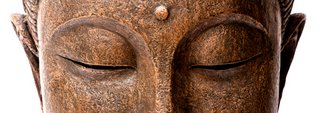 Buddha Maybe your next vacation should be a journey inward.
On the path to the hot springs at Tassajara Zen Mountain Center, I begin a kind of walking meditation, a continual awareness of what I am doing right now. Now I am crossing a footbridge to the baths, now I am taking off my flip-flops, now I am standing in front of an altar and reading the calligraphy: “With all beings/I wash body and mind/free from dust/pure and shining/within and without.”
“Guess my name,” says the little girl who shares the Japanese-style outdoor pool with me.
“Okay. Emma,” I say.
“Do you know her?” her mother asks, puzzled.
“No,” I say, “she just looks like an Emma.”
I’m not clairvoyant, but at retreat centers people converge in unexpected ways. Beyond the pool, past the sun-bleached sycamores on the far side of the creek, seven naked women in sun hats carefully wind their way upstream. There’s something mischievous about them as they wander in haphazard single file. I try to give them a context: Are they workshop participants hunting for wild mushrooms? Who knows? I think of the Zen notion of beginner’s mind, ready for anything, open to everything…and, silently, I thank Emma and the naked women for being here, for opening my mind.
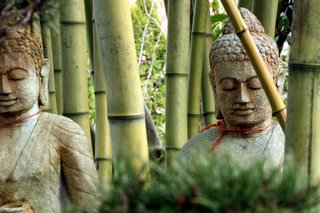 Buddhas In my mid-30s, I became an inveterate retreater. With two small kids, time to myself seemed a thing of the past. So I began to take week-long breaks, alone and seeking contemplation, at cabins, in farmhouses, on islands. Along the way, I discovered one retreat that offered me contemplation as a way of life shared by an entire community. Tassajara is the place I return to year after year.
Slowing way down is the first gift of Tassajara, and slow is the only way to drive the 14-mile dirt road that climbs through the Los Padres National Forest and over a 5,000-foot ridge of the Santa Lucia Mountains to the retreat. I stop and look down the steep descent through firs, sugar pines, tanbark oaks, and madrone into the canyon cut by Tassajara Creek. I exhale deeply, sloughing off my half-day drive south from San Francisco and a few layers of anxiety that have accumulated since my last visit here — the war and its threat to all of us with draft-age children, my divorce driving its way toward finality.
An open gate leads travelers to Tassajara, also known as Zenshin-ji (Zen Mind Temple), founded in 1966 by Japanese Soto Zen priest Shunryu Suzuki Roshi and the San Francisco Zen Center. The first Soto Zen monastery outside of Asia follows a traditional monastic schedule during the fall, winter, and early spring, then opens for guest season from late April through early September.
At Tassajara, where electricity is largely confined to the dining room and kitchen, cell phones don’t work, and a single public telephone is more trouble than it’s worth, guests are offered another way — the way of retreat. Here, the scheme of things is clear. One’s small place in it, uncomplicated.
 Digital Zen Alarm Clocks and Timers, available in maple, walnut, bamboo, and black lacquer Whether here or elsewhere, there are a number of ways to have a retreat. Retreats are times to turn inward, to quiet down, to let your own needs take precedence. At Tassajara, free from cars, buses, jobs, and family responsibilities, you simply bathe, eat, sleep, sit in meditation (or not, as you choose), swim, hike, read. You might venture to the massage kiosk to be kneaded, tapped, stretched, and unblocked. The day’s big excursion could be swimming some laps in the spring-fed creek-side pool, or hiking a mile downstream to a tumble of large boulders and small waterfalls you can ride down to the local swimming hole. Feeling more energetic, you might hike one of the trails — my favorite being up the mountain to the Wind Caves, where you can sit inside shallow, white-sand-floored pockets in the granite cliff face and behold the top of the world. You can return for the organic vegetarian meals, a cuisine pioneered by Tassajara’s Ed Brown and Annie Somerville, the chef of the Zen Center’s San Francisco restaurant, Greens.
Another way of visiting Tassajara is as a workshop participant. “Zen and Yoga” marks a turning point in my retreat life — a threshold to greater community, one that adds structure to my retreat time. With my daughter away at college and my teenage son spending every other week at his dad’s, I no longer crave alone time as I once did. Instead, I’m looking for ways to realign myself in relationship to others. In this context, retreat becomes an active verb.
My workshop takes place in the meditation hall, or zendo, where over the next three days we will examine how sitting meditation and the practice of yoga postures, or asanas, inform and enhance one another. I have brought my Zen Meditation Timer to end my meditation. It’s taught by Victoria Austin, a long-time Zen priest and yoga teacher who is also president of the San Francisco Zen Center. The afternoon we arrive, Victoria introduces us to the statue of a sitting Buddha that dominates the altar in the middle of the hall. When a fire destroyed the old zendo some years ago, the stone statue exploded into hundreds of pieces. Painstakingly reconstructed, the Buddha is almost exactly like the original, but not quite. “This Buddha is like practice itself,” Victoria reminds us. “You’re always putting yourself back together, each time a little differently.” I can relate to that; we all can. Practice reaches far beyond the yoga or meditation mat to include, ultimately, each moment of our waking lives.
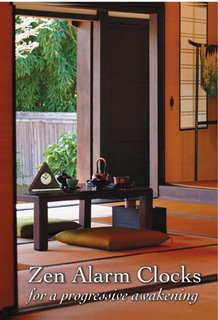 Tea Room with Zen Clock and Timer After restorative yoga, dinner, and an evening plunge in the hot springs, I’m as relaxed as I’ve ever been, in a comfy bed in my roomy turn-of-the-century cabin, lulled to sleep by the sound of water tumbling over creek stones. I’m awakened before dawn by the boom of a mallet striking a wooden block, calling the entire community to meditate in the zendo. An hour of sitting sorely reminds me of all the muscles it takes to sit that long, that straight. After temple cleaning, my workshop group continues with asana practice, all 25 of us spread out over the zendo, assuming Mountain, Tree, and Triangle poses, the Warrior series, and all the standing poses to fully awaken.
Famished, at breakfast I have a hard time choosing between the offerings: polenta with fresh strawberries, kiwis, and bananas, and the pancakes with raspberry compote. I sit at a table in the dining hall overlooking the creek with three women stem-cell researchers from Stanford University, a woman running for county supervisor, and a Minnesota man who founded a successful marketing firm. Busy lives and type-A personalities are a common bond for many people attracted to retreats.
Later that day, I talk to the gregarious guy from Minnesota. “I’m usually shy and standoffish, judgmental,” he admits to me, “but I decided to pay attention yesterday during sharing time.” He pauses to let a little cynical emphasis grin through. “I felt completely drawn to each story; it made me want to engage with everyone here.” I found myself wishing I’d done that. “Funny what’s possible,” he says.
It’s been a day of intense physical work, experimenting with yoga poses that help strengthen our meditation posture and focus our attention. Lying still, during Savasana, our last pose, Victoria says to us, “Let sounds come to you rather than pulling in the sounds.” I drift in and out, aware of the sound of footsteps on the gravel path, of the squawk of the ubiquitous blue jays, but most of all of our sighing — an ongoing chorus vocalizing the deep pleasure of exertion and release, a natural by-product of the primary work we are doing: following our breath in and out.
The next night at Victoria’s dharma talk, she compares the monks’ winter practice at Tassajara to one long breathing in, or refreshing the practice, and the summer guest season to a long breathing out, or giving to the larger community. I resolve to work on that out-breath.
 yoga Afterward the low light of kerosene lanterns dimly illuminates the path back to my cabin. I stop to watch the new moon rising above steep black slopes.
It is summer solstice night. Looking deeper, into the bright and scattered stars, I feel as if I’m standing in a roofless cathedral, buttressed by the Santa Lucias, part of some great force tilted upward in praise. My body tingles from the demands of the day, fledgling upper-back muscles awakened, all my cells celebrating in active communion. Attention. I whisper the word to myself, like an ancient secret. I raise my arms to the new moon in thankful salutation, take a long breath in, and sigh it westward, down the path of the year’s longest day.
For reservations call (415) 865-1895 or visit sfzc.org/tassajara/.
Adapted from Body + Soul, April/May 2005
Posted in Bamboo Chime Clocks, Hot Springs, Japanese Inspired Zen Clocks, Meditation Tools, mindfulness practice, Now & Zen Alarm Clocks, Well-being, zen monks
|
|
|
|